In the final instalment of the sleep tracking fitness challenge, I’m going to talk about my experience with the WHOOP strap. This and the Oura ring, which I covered last week, are the two big players in the recovery tracking space. Both keep tabs on your activity during the day and your heart rate at night, and aim to tell you whether you’re getting enough good quality sleep to support your athletic endeavours.
Both WHOOP and Oura more or less do what they promise. Neither is necessary to track your sleep; low-tech solutions can do the job well enough. But if you’d like more data, either is a good device for the purpose. Both will monitor your sleep and give you a score; both will relate that score to how much exercise you’ve been getting. WHOOP may work better for you if you’re an endurance athlete or do a lot of cardio, while Oura is probably the better pick if you mainly do other types of exercise or are interested in sleep more generally. I preferred Oura’s day-to-day experience, but WHOOP’s monthly analyses are a data nerd’s delight.
[referenced id=”1044849″ url=”https://www.lifehacker.com.au/2021/02/what-its-like-to-track-your-recovery-with-the-oura-ring/” thumb=”https://www.gizmodo.com.au/wp-content/uploads/sites/4/2021/01/30/ktekflbxjdmzytiffukn-300×169.jpg” title=”What It’s Like to Track Your Recovery With the Oura Ring” excerpt=”In our last instalment, I started experimenting with sleep tracking in hopes of recovering better for my weightlifting sessions. I’ve used the Oura ring and Whoop band, but today I’ll talk mainly about Oura — my favourite of the two — and about what metrics I found useful.”]
Those thoughts amount to my best guide to choosing between the apps, but there are also two important questions you need to ask yourself before buying one or the other:
- Would you be more annoyed by wearing a ring all the time, or a wristband? If you have a strong preference, this is honestly the biggest factor.
- Would you rather pay up front, or monthly? Oura is around $390 (or more) for the device, but after that, it’s free to use the app. The WHOOP strap is free, but a membership runs $40/month for a six months — though it’s a bit less if you sign up for a longer membership.
The WHOOP’s pricing model makes me wonder: How long do you need to track your recovery? I came across several discussions on the r/whoop subreddit in which people said they only used the device for six months or a year. By the end of that time it had effectively taught them how to prioritise their sleep and balance their activity and recovery.
I didn’t have to ask myself this question, because the WHOOP folks gave me access to the app to test it out, but I find it somewhat disconcerting to ponder the existential question: How long I will care?
Anyway, WHOOP has some cool features.
What it’s like to wear the WHOOP strap
The WHOOP strap is a gadget that looks like a watch, except it has no screen. It’s a lightweight rectangle with an elastic strap. There are green LEDs on the skin side of the rectangle that pick up your pulse, and an accelerometer to detect motion.
The strap is meant to be worn 24/7, and it has a clever way to charge. There’s a little plastic brick that you charge separately, and then when the strap’s battery runs low, you unplug the brick from its cord and slip it onto your wristband. This way, you never have to take off the strap itself.
That said, if you get the band wet — say, if you wear it in the shower — you’re then stuck wearing a wet band. WHOOP sent me a spare one, which was handy to change into on those occasions. (Spare bands, and spare charging batteries, both cost extra.)
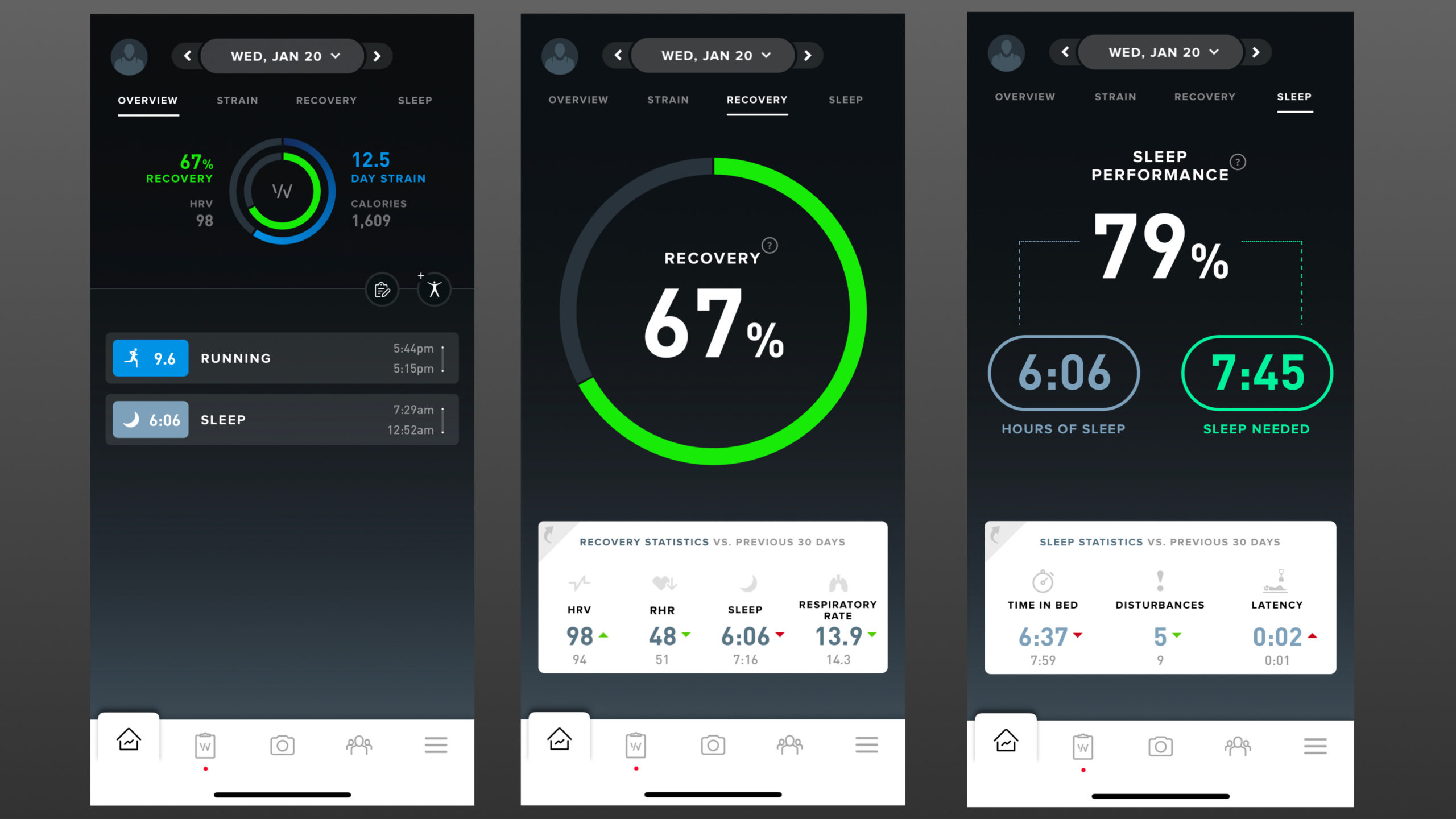
Using the app
WHOOP’s app is straightforward in some places and arcane in others. At first, I was always forgetting where I saw a certain number or feature. But once you get the hang of it, you’ll find that the app is full minutely detailed views and extra information.
Right up front, where you can’t miss it, are two numbers: your strain score for the day, and a recovery score based on how you slept.
The strain score is based on your heart rate throughout the day. This makes the most sense for people who do a lot of cardio, which made the app slightly awkward to use as a person who only really walks and lifts weights. If I were a runner or if I played team sports or did a lot of aerobics videos, I’d love this.
Your strain gets higher as you do more exercise, and the number is calculated in a way that isn’t particularly easy to wrap your head around. Still, bigger numbers mean you’ve spent more time with your heart rate elevated. That means that if you spent a lot of time with a high heart rate because you were nervous, rather than exercising, your strain will be high — which makes sense, honestly, because it still represents stress on your body.
Recovery is another single number, this time given as a percentage. If you are less than 33% recovered, you’re in the red; if you’re over 66%, you get green. If you’re working hard but also sleeping well, you’ll see a lot of yellows and greens, maybe the occasional red. A string of reds, on the other hand, probably means something is wrong.
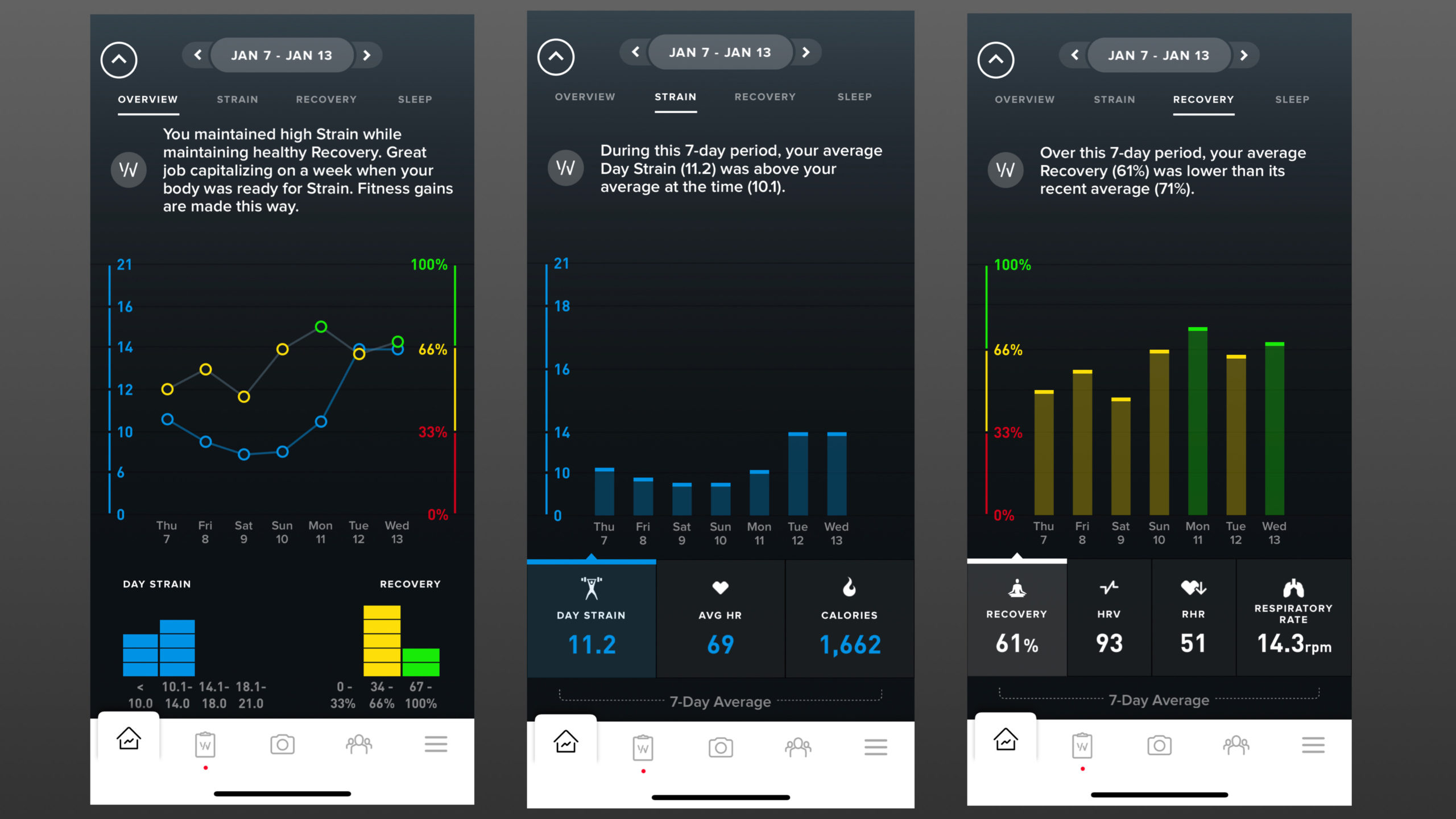
As you’re looking through the app, my best advice is to mess with everything you see. If there’s a little card giving you some information, tap it; it might flip over and give you more details. When you’re looking at your recovery score, swipe up and a chart of your past week’s scores will suddenly slide into view.
The coolest surprise feature, which I didn’t notice until someone from the company pointed it out to me, is that if you turn your phone sideways you can see a screen showing your heart rate throughout the day, with sleep and exercise highlighted.
One of the most fascinating features WHOOP offers is the sleep coach. You tell it what time you’d like to wake up tomorrow, and it tells you when you should get to bed tonight. That’s not so special in itself; many apps do the same. What’s different here is that you can choose whether you want to “peak” versus “perform” versus “get by.” I don’t know how accurate the three estimates truly are, but on a gut level they felt about right. For example, on a day that my sleep need was calculated at 7:48, the recommended sleep time for peak performance was 8:33; to simply get by, it was 5:59.
You can learn a lot from the weekly and monthly reports
I found the daily screens a little confusing to navigate, but I loved the weekly and monthly reports. You don’t get the monthlies until you’ve been wearing the strap for a full calendar month, but they’re worth the wait.
These reports tell you about your trends. Since the whole point of comparing recovery to strain is to figure out whether they balance out, there are charts to show how well you aligned the two.
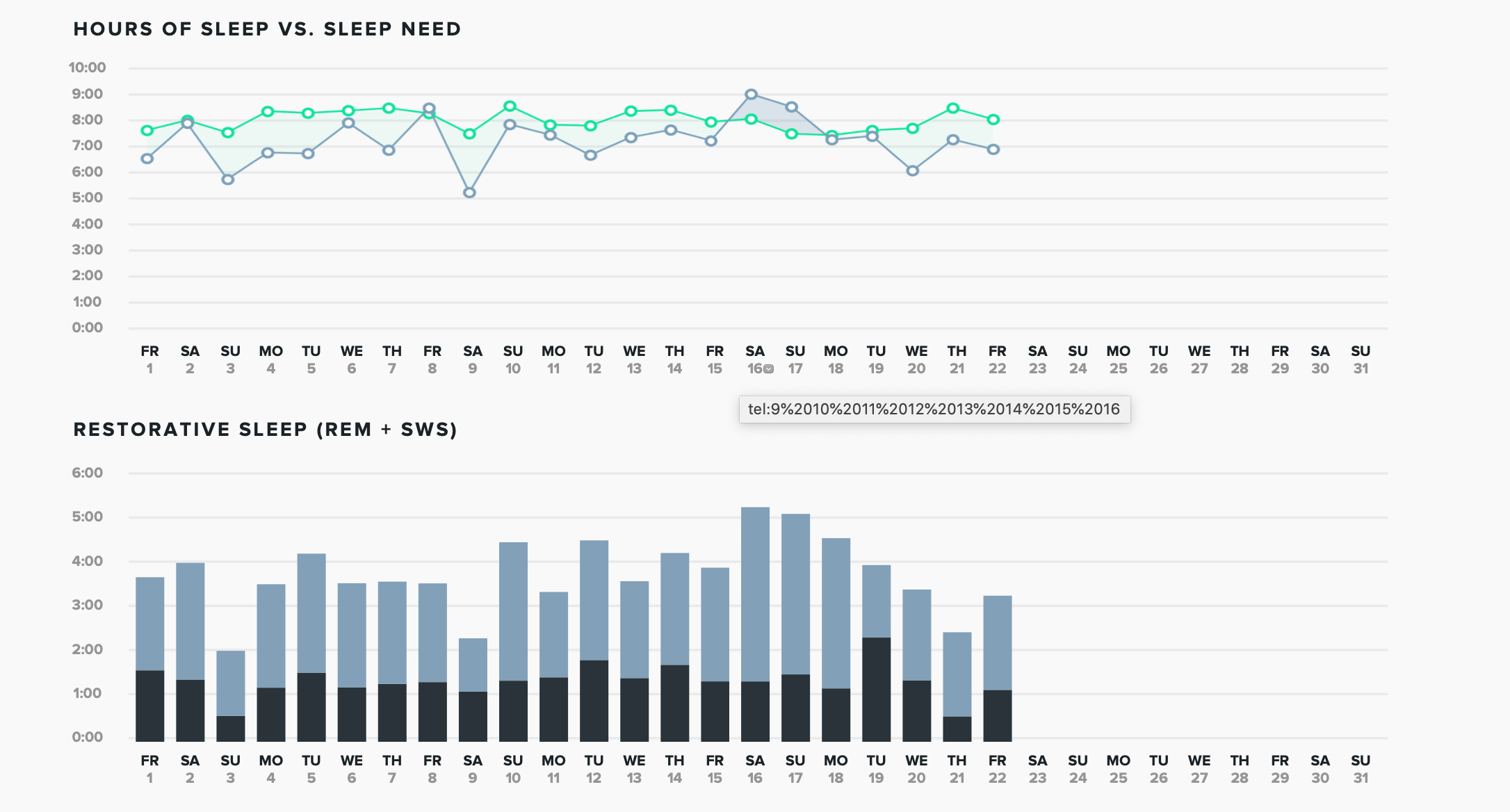
I mean, just look at these:
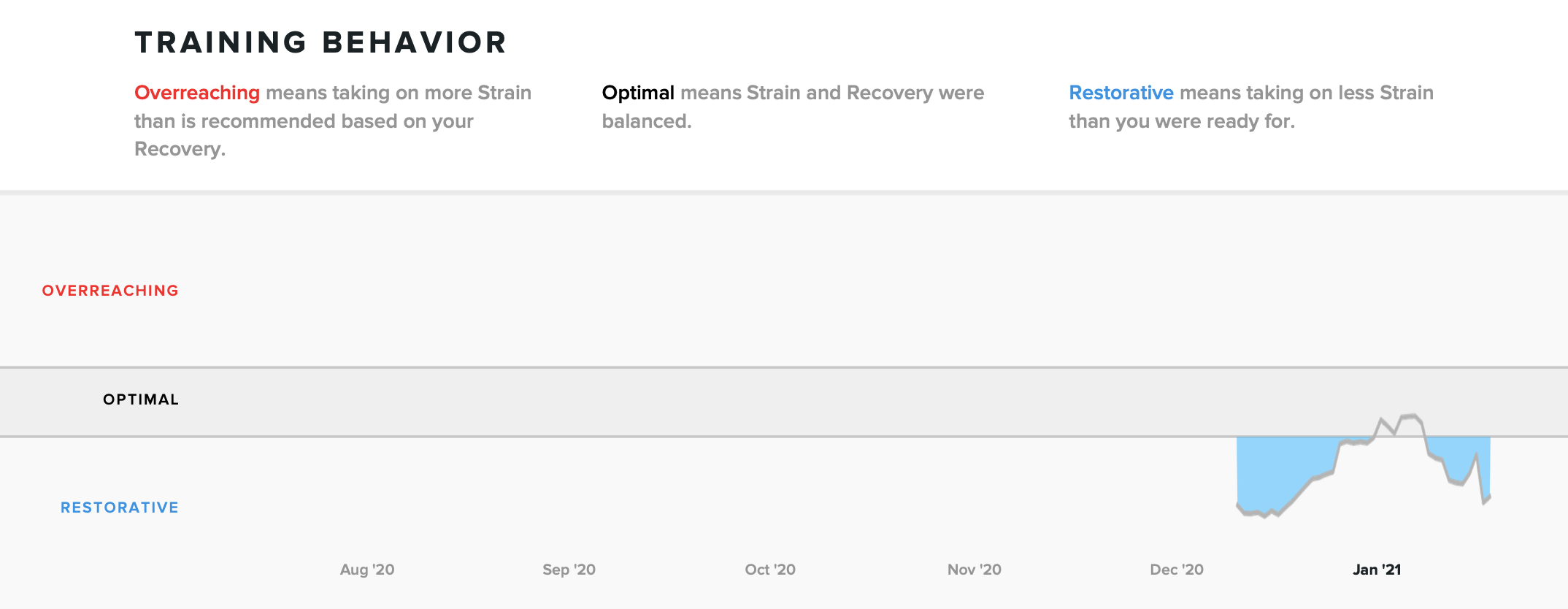
By far the coolest graph in the set, and probably the coolest feature, is the correlation matrix you get from the daily journal feature.
To use the journal, you need to open the app each day (or find the clipboard icon on a past day’s screen) and answer a little survey that you’ve set up for yourself. Basically, you’re choosing variables to look at, and the monthly report will tell you whether those variables correlate with good sleep or poor sleep. I chose several, including whether I had had alcohol and whether my stress was particularly high. You can use the journal to evaluate supplements you’re taking, to see if your hydration levels affect your sleep, or to see if your recovery score changes when you’re on your period. The only catch is that the app needs a mix of yeses and nos (five of each, minimum) to be able to calculate correlations. Anyhow, here’s one of mine, for alcohol:

I think every sleep expert I’ve ever interviewed has mentioned that people rarely believe alcohol affects their sleep, and are astounded when they start paying attention and find out that it does. It’s interesting to see the data right in front of me.
Now, these are correlations, distinct from causation. I know that I tend to stay up late on nights I have alcohol, and that these nights tend to be at the end of a training week, when I’m already more likely to be under-recovered. If you meditate or take a supplement on nights you expect to have difficulty sleeping, that thing could show up with a negative correlation even if it really does help you sleep. So it’s important to be thoughtful about how you interpret your data.
All that said, the standard caveats apply: I wouldn’t rely on any consumer sleep tracking device to tell me for sure whether I’m getting enough of a given sleep stage (remember, Oura tells me I always get too little REM sleep, and WHOOP routinely tells me my REM is on the high side). I use the data from sleep trackers to help guide my medium and long term planning, rather than as a prompt to skip workouts. Still, I think both devices work well to help you see those patterns, each in its own way.
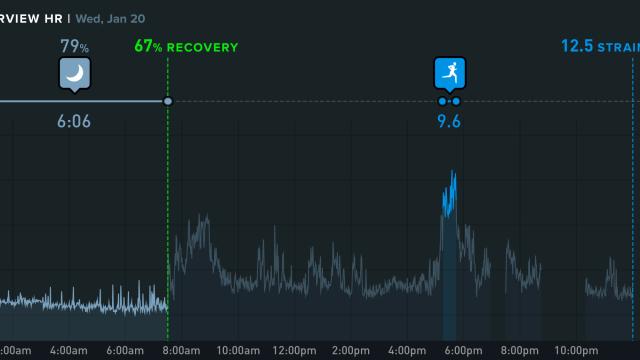
Leave a Reply
You must be logged in to post a comment.